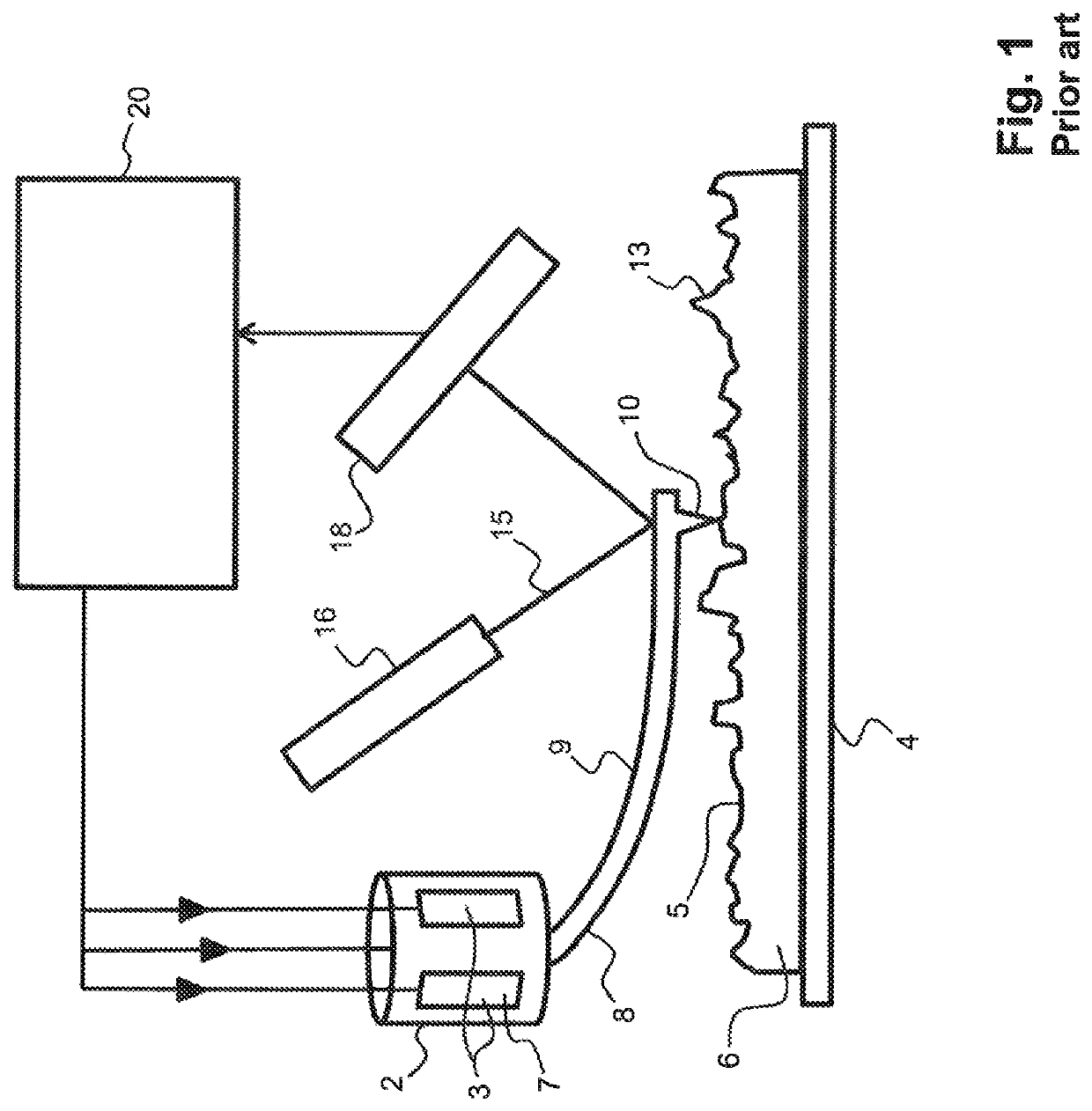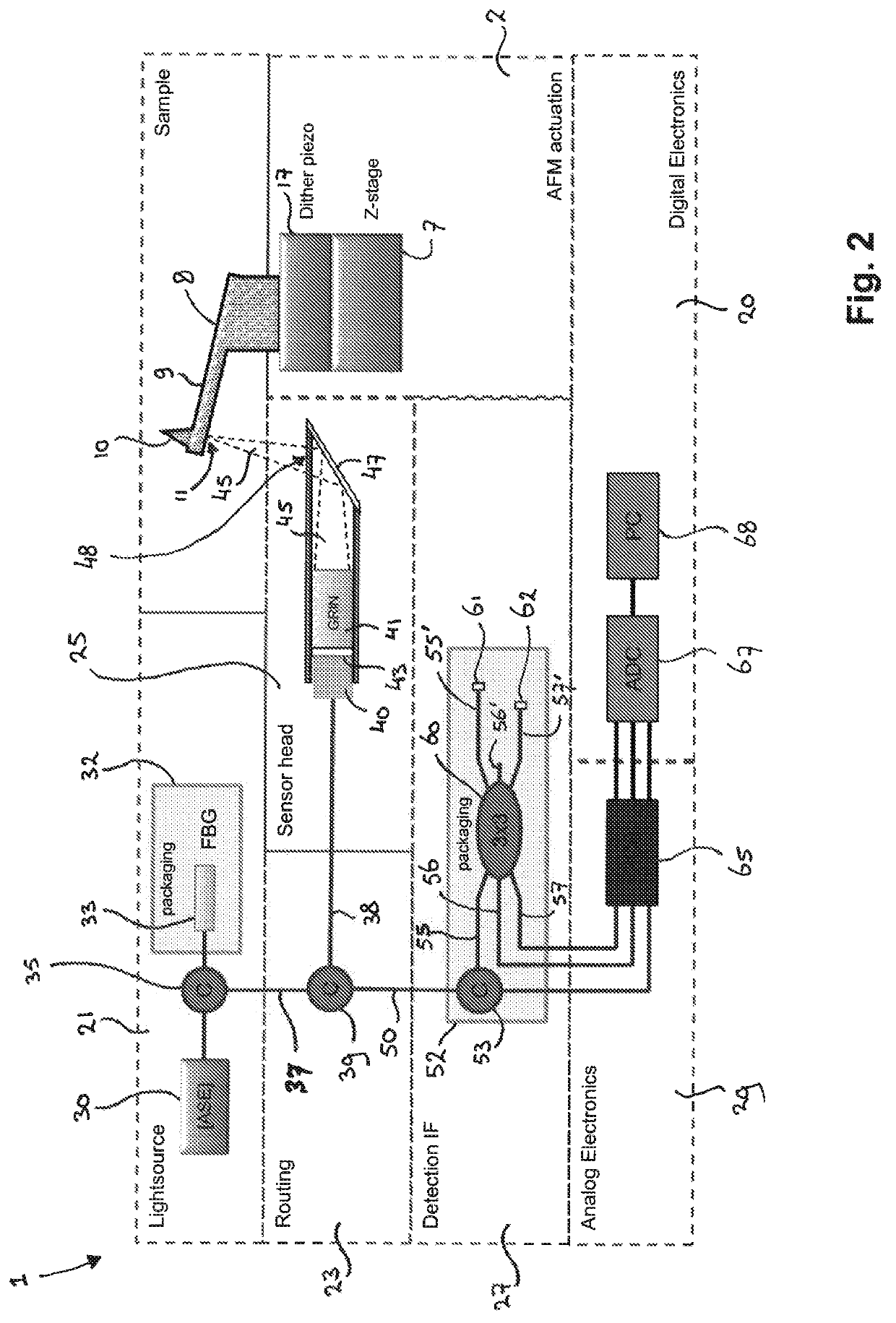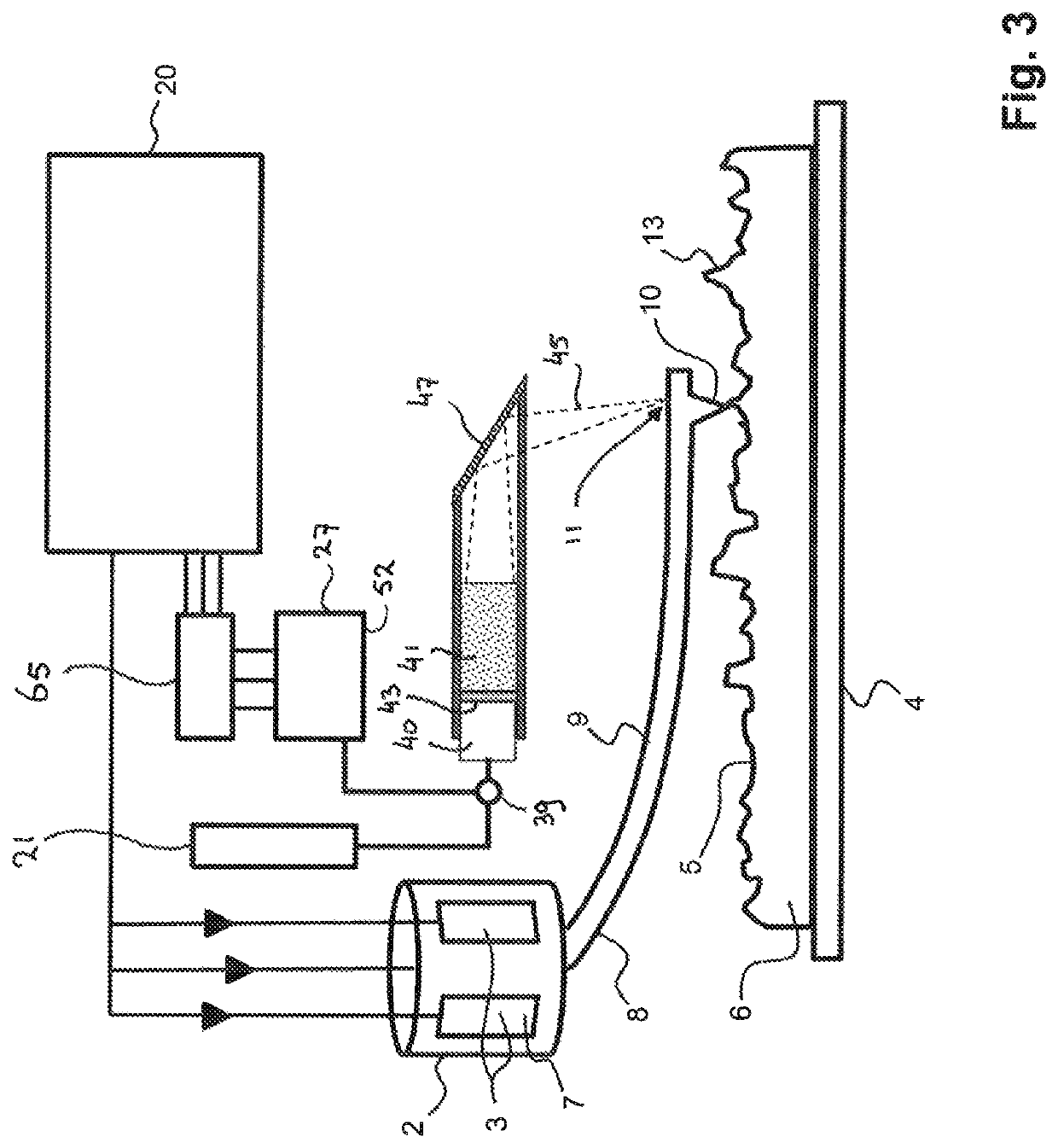Scanning probe microscopy system for and method of mapping nanostructures on the surface of a sample
a microscopy system and nanostructure technology, applied in the field of scanning probe microscopy system for mapping nanostructures on the surface of samples, can solve the problems of high resolution and accuracy of microscopic probes, high processing costs, unrealistic or at least cumbersome, etc., and achieve the effect of increasing throughput, accuracy and footprin
- Summary
- Abstract
- Description
- Claims
- Application Information
AI Technical Summary
Benefits of technology
Problems solved by technology
Method used
Image
Examples
Embodiment Construction
[0024]FIG. 1 schematically illustrates the working principle of a typical prior art atomic force microscope. In FIG. 1, a probe head 2 comprises piezo type drivers 3 for the X-, Y-, and Z-directional motion of a probe 8. The probe 8 consists of a cantilever 9 having a probe tip 10 arranged for scanning a sample surface 5 of a sample 6. During scanning, a dither piezo 17 (not shown in FIG. 1) or other means of actuations such as photo-thermal actuation, electrostatic, etc., may drive the cantilever in vibrational mode (for example close to resonant frequency) to enable tapping of the probe tip on the surface. The manner of applying a vibrational motion to the probe tip is known to the skilled person.
[0025]Scanning of the sample surface 5 is performed by moving the probe tip 10 in the X- and Y direction parallel to the sample surface 5 (or alternatively, by moving the substrate surface in the X- and Y-directions while maintaining the position of the probe tip fixed in the X- and Y-dir...
PUM
| Property | Measurement | Unit |
|---|---|---|
| frequency | aaaaa | aaaaa |
| frequency | aaaaa | aaaaa |
| frequency | aaaaa | aaaaa |
Abstract
Description
Claims
Application Information
 Login to View More
Login to View More - R&D
- Intellectual Property
- Life Sciences
- Materials
- Tech Scout
- Unparalleled Data Quality
- Higher Quality Content
- 60% Fewer Hallucinations
Browse by: Latest US Patents, China's latest patents, Technical Efficacy Thesaurus, Application Domain, Technology Topic, Popular Technical Reports.
© 2025 PatSnap. All rights reserved.Legal|Privacy policy|Modern Slavery Act Transparency Statement|Sitemap|About US| Contact US: help@patsnap.com



